- Umang Sagar
- Forest, Recent article
Sundarban Delta

Introduction
- Whenever we discuss Mangrove forest in schools, colleges, the first place which comes to our mind is Sundarbans. It is considered the world’s largest delta and it is named after the Sundari tree and it is formed by surrounding the Brahmaputra, Ganges, and the Meghana Rivers. It spans from the Hooghly River in West Bengal to Baleshwar River in Bangladesh’s division of Khulna and it also comprises of closed and open mangrove forest. The seasonally flooded Sundarbans freshwater swampy forest lies inland from the mangrove forest in the coastal fringe. The land of the forest is also used for agricultural purpose and it is intersected by multiple tidal streams and channels. Itislisted among world heritage sites by UNESCO spread over 10000 sq. km across India and Bangladesh and it gained a reputation by the visibility of the Royal Bengal Tiger and it also gained success as a National Park in the year 1984. The directorate of the forest is responsible for the administration and management of Sundarbans National Park in West Bengal as well as a forest circle was created in the year 1993to prevent the forest.
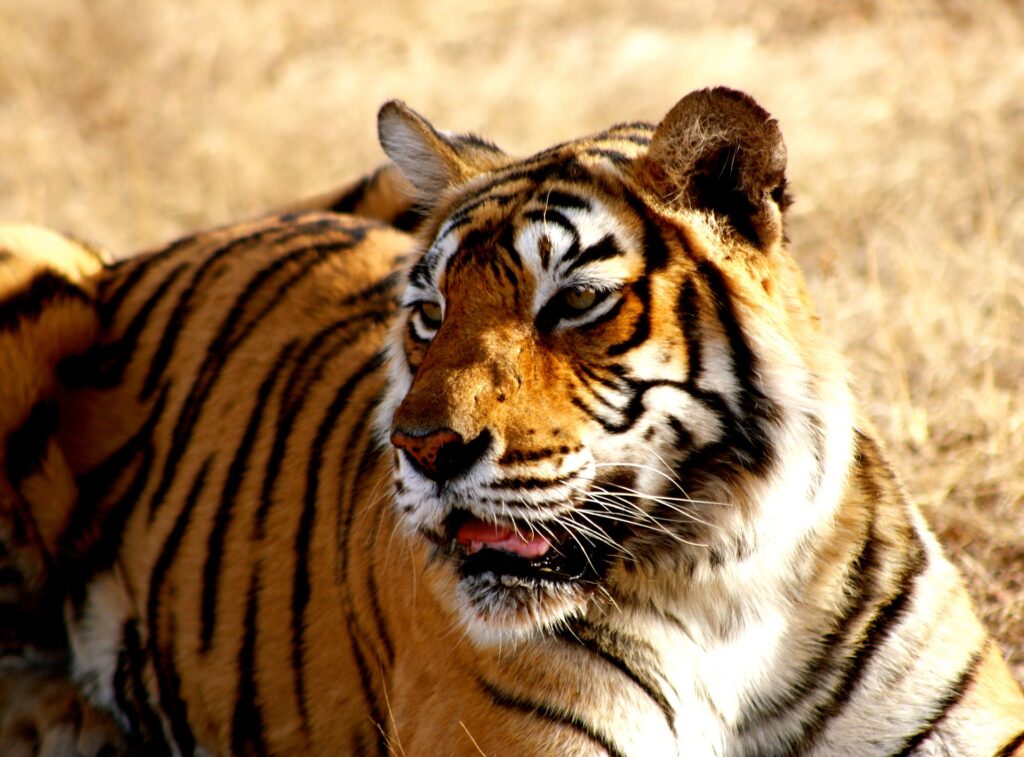
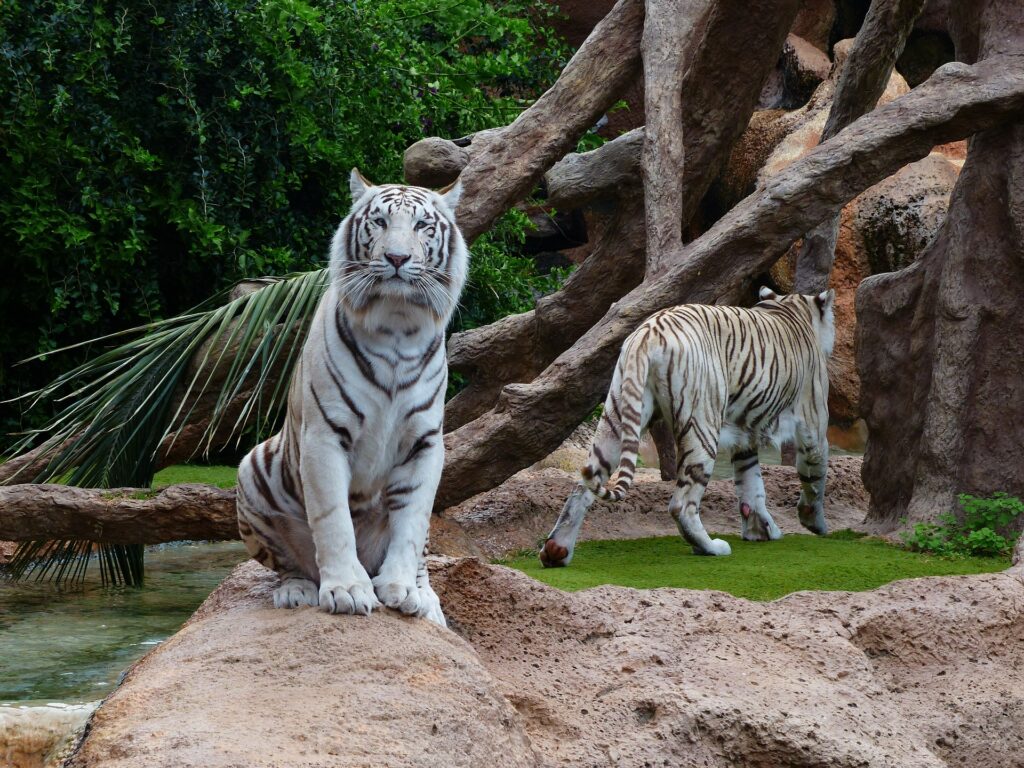
- It used to host maximum numbers of tigers, as per the unofficial record, 270 were counted in the year 2004 and in the present scenario, the strength of the tiger has been reduced to 100 to 120. Other than the Royal Bengal Tiger, this forest is home to varieties of wildlife like birds, reptiles, and numerous creatures.
- This place is under the threat from both natural and human-made causes. In the year 2007 as well as in the year 2009, the natural calamity “Cyclone Sidr” struck the entire Sundarbans with massive casualties. At least 1, 00,000 people were affected by this cyclone.
Huge Struck Due To Amphan Cyclone
There also had been a huge struck of Amphan cyclone on 20th May that struck India and Bangladesh last month passing through the mangrove forest of Sundarban delta. The cyclone was attacked with massive storms along with heavy rain and sustained winds of 170 kilometers (105 miles) per hour and strong wind of up to 190 km/h (118 mph). The mangrove lost some of the Cyclone Amphan’s energy protecting densely populated cities like Kolkata the impact of the storm was devastating for the millions of people who live in Mud houses. The mud houses were swept away as well as the embankments were destroyed and the farms were destroyed and farms were flooded by the saline water that made them unfit for cultivation.
Apart from the wildlife, deep forest well as bird watching, the most important thing in Sundarban is the culture and customs of local people.

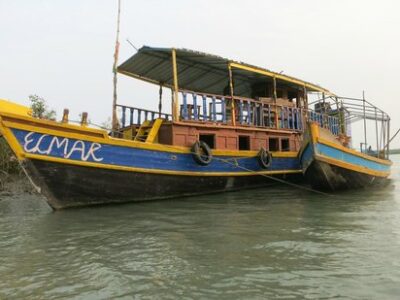
- So far as the wildlife, as well as the customs and culture, are concerned, let me share the experience of my journey to Sundarbans trip.
My Personal Experience During Sundarban Journey
- On 30th December 2014, I and my family went on a small trip to Sundarban. We took the ride from my house to the tourist office “Backpackers, Tour de Sundarbansat 4 Tottee Lane near Sudder, Kolkata around 7:00 am.


- By 7:30 many other groups along with the tourist guide were already assembled and got into the bus ride towards “Gosaba”. It was an AC coach with a 40 seat capacity and the breakfasts were served Sandwiches, chips along mineral water. It took 4 hours to reach Gosaba and from there, we boarded the lounge by the name “Elmar” which means “the sea” in Spanish from the Gosaba Jetty. After that, I and my family had a spectacular ride on the lounge. The tourist guidewire continuously guiding about the journey, places, history, geography, and the local ornithologist were describing the different birds which made our journey memorable. The ride was 2 hours and was enjoyable with mild winter. After 2 hours of the continuous journey, we reached an eco-village in “Satjalia”. The ownership of eco-village was of “Backpackers touring agency”. This eco-village was fully a conception of the Vedic age with no electricity but, there was a touch of the luxury like clean toilets, comfortable beds aa center for meeting the fellow travelers, some farm animals as well as this eco-village has a facility of a bicycle ride and open kitchen for the guests to see their meal being cooked by the Sundarban women. Well after reaching the village, we all had lunch and in the evening, we went for a jolly boat ride and we saw plenty of jellyfish.

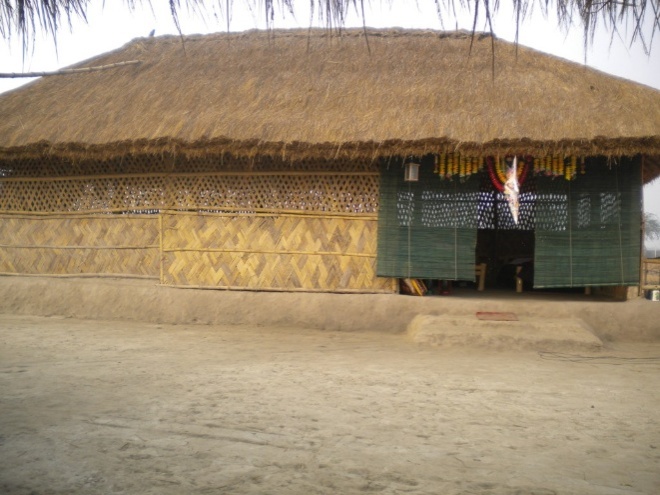
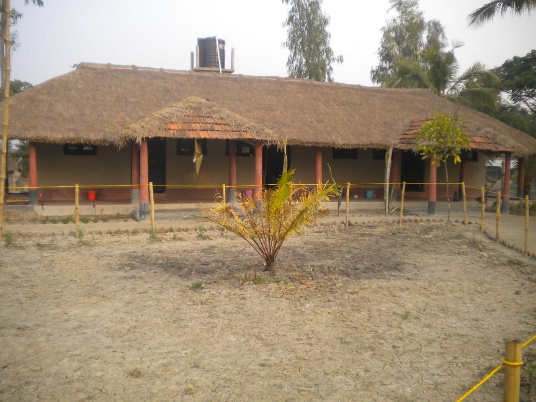
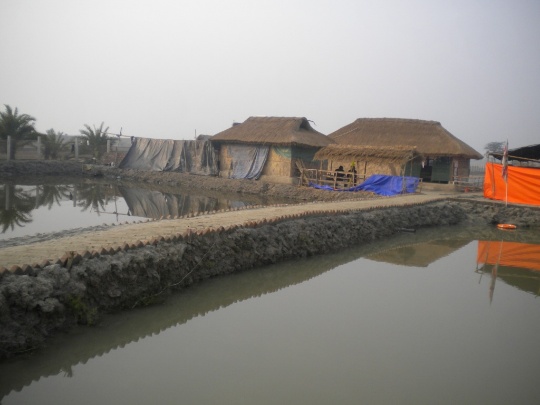
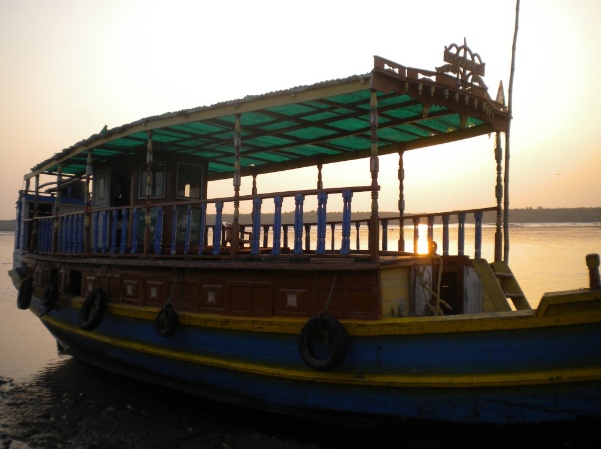

News
- According to “Indian Express” dated 23rd September 2021 the loss of the biodiversity across the shorelines in Sundarbans as well as some of the patches of mangroves are lost due to the large-scale deforestation as well as the fragile mangrove habitats have been fragmented. The irreversible loss of biodiversity is neglected which will never be compensated with any cut and establish a new theory. The coastal mangrove habitats are the preferred hub of coastal fisheries, aquaculture, pisciculture, shrimp farming, crab farming, all these farming techniques provide a livelihood to the local people.
Culture


- On that night we all the tourists were getting acquainted with the culture and customs of Sundarbansin the form of “Jatra” on “Bono Bibi”.
- “Bonobibi” is the goddess of the forest and she is known by “Bandevi”, “Bandurga”, and “Byaghradevi”, a guardian spirit of the forests regarded by both Hindu and Muslim residents of the Sundarbans which are spread across West Bengal in Eastern India and Bangladesh.
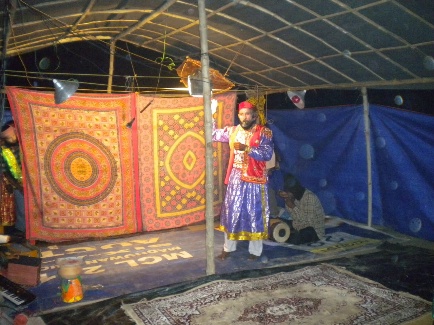


- Bonbibi is believed as the daughter of Berahim (Ibrahim), a fakir from Mecca. When his first wife Phulbibi could not bear any child, Ibrahim (locally known as Berahim) married Golalbibi with Phulbibi’s permission tagged with the condition of fulfilling a wish of her in the future. At the same time, God decided to send Bonbibi and Shah Jangali from heaven for a divine mission
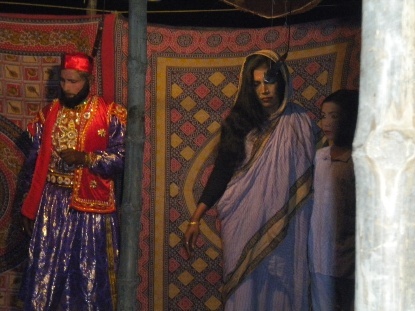

He instructed them to take birth as the children of Golalbibi. When Golalbibi became pregnant, Ibrahim left her in a forest to satisfy his first wife’s wish, as he promised her earlier. Bonbibi and Shah Jangali were born in the forest to Golalbibi. Allah sent four maids from heaven to take care of them. Golalbibi abandoned Bonbibi in the forest left with Shah Jangali in her arms. Bonbibi was raised in the forest by a doe. After seven years, Ibrahim understood his mistake and took back Golalbibi and her two children to Mecca.
Once, while praying at the mosque of the prophet of Islam, Bonbibi and Shah Jangali received two magical hats. With the help of those magical hats, they flew to the country of eighteen tides (atharo bhatir desh) in Hindustan (but, according to another version of the narrative, they were brought to the country of eighteen tides by Gibril). After reaching there, Shah Jangali gave the adhan (call to prayer). The country of eighteen tides (the Sundarbans) was under the control of the demon king Dakshin Rai, till their arrival. The sound of adhan reached his ears. He sent his friend Sanatan Rai to enquire about them. When Sanatan informed him about the duo, he decided to throw them out of his territory. While he was about to go into the battle, his mother Narayani prevented him from going and she herself went with her army of ghosts and goblins to fight them. Bonbibi defeated Narayani after a long battle. But out of mercy, she returned the half of the erstwhile kingdom of Narayani and her son. Narayani became a friend of Bonbibi. While the inhabited part of the Sundarbans is believed as the realm of Bonbibi, Dakshin Rai is believed as the ruler of the deep forest.
Bonbibi is another Superpower who is popularly worshipped in the Sundarbans as the savior of the natives and she is also is considered as the omnipotent power who looks after the welfare of the dwellers of the forest. Bonbibi is very popular among both the communities, the Hindus as well as the Muslims.
Among all the Gods and Deities are Manik Pirs, Olabibi, Manasa, Gazi Saheb, Sa Janguli, etc. But among these, Dakshin Rai holds a special place. Worshipping Dakshin Rai is a must for the people before they enter the forest. Dakshin Rai could be a legend and is adored by all, irrespective of their caste and creed, and is considered the God of the Tigers.
Any forest-going woodcutter or honey collector first prays the deities of Bonbibi and Dakshin Rai, which are usually placed at the edge of forests. Importantly in spite of quick depletion and lesser dependence on forest manufacture for living in conjunction with the gradual rigidifying of religions, the syncretic essence of Bonbibi has not receded in the remote areas of Sundarbans. For the previous few years, the individuals of the Kalitala village in north twenty-four Parganas are encapturing the whole life history of Bonbibi by displaying a panel of clay pictures that is quite 250 in range. The residents of the Sundarbans refer to Bonbibi as a Musalmani Hindu deity, the practice approach is completely different within the 2 communities residing therein space. Bonbibi is originally known by the Hindus as an immortal with a monotheistic background in all individuals.
The next day, we had a wonderful expedition to “Sajnekhali”, “Sudhanyakhali”, where we enjoyed the experience of the existence of flora and fauna. On both sides, we found various types of mangroves sharing the river bank.
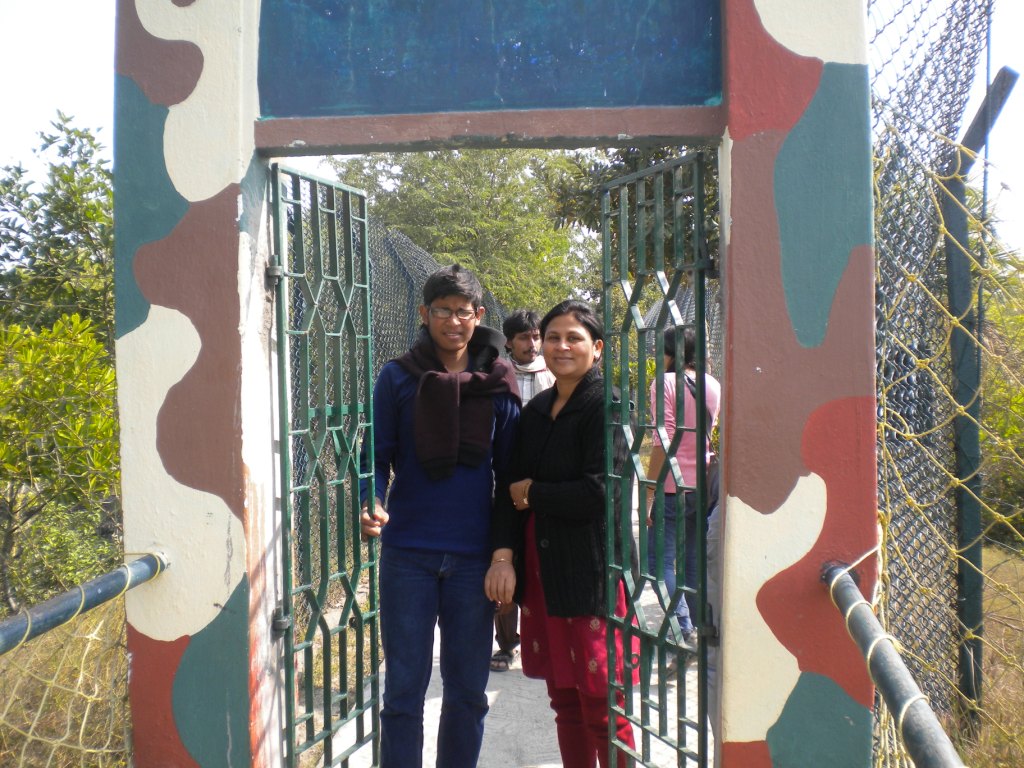
On 2nd January 2015, we returned to Kolkata.
In Sundarbans, this has been the first time that the women guides will be present on the boat that will enter the tiger reserve. “Bhaswati Sarkar is a former school teacher and she has worked as a trainer in a village self-help group.
Sundarbans Tour Packages
=> There are many tourist organizations that are dealing with the Sundarban trip like;
Tours de Sundarbans “Backpackers” is situated at 4 Tottee Lane in Kolkata which is adjacent to Plaza Hotel. For enjoying a lovely waterways trip to Sundarbans just make a single call to the travel agent “Rajesh: 6290403668, 9836177140 or you can send an email on this id junglawala@gmail.com.
This travel agency presents three guides for your preference like :
- Sundarbans Tour 1 day
- Sundarbans Tour 1 night 2 days
- Sundarbans Tour 2 nights 3 days
Sundarbans Tour
- This tour is aimed at travelers who are Short on time and do not see themselves in this part of the world in near future. Since it’s a day-long affair one can expect to be tired after the tour. All said and done if one day tour remains as the only option of visiting Sundarban then surely it should not be missed Sundarbans.
1-Day Package
5.30 to 6 am:
- We, Will, pick you up from your location anywhere in Kolkata and we drive for 3 hours to the last road point.
9 am:
- Embark on our motorized boat and head towards the Sajnekhali Forest office for the Permits into the Sundarban Tiger Reserve, passing through the local villages and mangroves. Breakfast Will be served on the boat.
10.30 am:
- After getting the requisite permits we will head off into the mighty Sundarbans for our share of Nature’s bounty passing through the narrow channels and creeks of the Delta and trying to spot the inhabitants of this mysterious and intriguing landscape. One could expect to spot Wild Boar, Monitor lizard, Estuarine Crocodile, Irrawaddy Dolphins, Otters, lots of migratory and resident birds and not to forget The Royal Bengal Tiger.
- Lunch and evening tea will be served on the boat.
- We will visit atleast two watchtowers namely Sajnekhali and Sudhyankhali during the whole day.
5 pm:
- Back for Kolkata after the tour.
8:00 to 8.30 pm:
- Reach back to Kolkata. This is a group tour and the group can reach upto12 people.
Cost:
- Rs.3000 per person, however a minimum of 5 people or the cost equivalent is required to start the tour.
- Non-Indian guests will have to pay separately for the Permit fees inside the Tiger Reserve.
- The vehicle can be A/C Bolero or A/C tempo Traveller depending on the number of people.
- Get in touch even if you are single and we will try to club you with the existing group.
1 Night 2 Days Package
8 am:
- Meet us at our office at Backpackers.
- Sundarban tour, 4 Tottee lane and leave Calcutta by car/van/minibus. Clients can also have a pickup point from Science city at 9 am.
9 am:
- Breakfast of veg sandwich will be served. Three and half hours of journey to Godkhali, the last road point.
11 am:
- There are 2 ways of reaching our Eco village from Godkhali.
- Cross over to the island of Gosaba, which is the biggest market for hundreds of villages around, and then take an auto-rickshaw to the Riverbank of our Eco village.(takes one and half hours.)
- Take direct engine boat to Eco village.(takes two and half hours to three hours depending on Tide)
- We will decide which way to take depending on which will be faster and easier on that particular day.
1.30 pm to 2.30 pm :
- Reach our Eco village abode on the island of Satjelia, followed by lunch with simple home-cooked food comprising Rice, dal, 3 types of vegetables, papad chutney salad, and fish curry.
3.00 pm:
- A walk through the picturesque paddy fields, the village of honey collectors and fishermen, looking out for local rituals and beliefs. Most striking are the smiles that are shared between the hosting villagers and the Guest of Eco village.
3.30 pm:
- Country boat ride for bird watching, during two to three hours, spotting seven types of Kingfisher, Egret, Brahmani eagles, Pond heron, Cormorants, etc, and above all getting introduced to the lovely mangroves, with surreal creatures like fiddler crabs, mudskipper fish, etc.
6.30 pm:
- Return to the Eco village, just after the sunset and you will be welcomed with Black tea and freshly fried veg Pakodas.
7 pm:
- An enchanting evening with the local musicians with their age-old musical instruments, in the quest to understand the local music in their backyard. One can try their hands on these musical instruments.
8.30-9 pm:
- Dinner is served according to the leisure of every individual guest which comprises Rice, dal chapati, 3 types of vegetables, and rice pudding along with chicken curry.
- After dinner, one can spend some time watching the star-filled sky (Milky Way too if you are lucky) and slowly head on to spend the night in the mud cottages of our Eco village. (The amenities of Eco village can be seen on the ‘ECO VILLAGE’ page of this website.)
2nd Day
6.30 am:
- We try to start as early as possible, on one of the four personalized engine boats (Elmar, Para Siempre, Clandestino, and Mangrove Mataal), get the required permissions from the forest office, which is just opposite our village, and head off into the jungle, for our rendezvous with one of the biggest mangroves of the world, rich in flora and fauna.
- This boat cruise will last till sunset and during this period we will visit 3 watchtowers, namely Sajnekhali, Sudhanyakhali, and Dobanki.
- Cruising the small channels and creeks we will try to spot different wildlife, spotted deer, wild boars, civet cat, monitor lizard, crocodiles, and dolphins and of cos the ROYAL BENGAL TIGER.
- Breakfast, lunch, and other refreshments will be cooked and served on the boat.
- At sunset, we start our journey back to Kolkata and reach by 9 to 10 pm.
- We try not to have more than 15 guests on any given day so that we can give proper attention to each and every traveler in the group. The prices include all the mineral water, food, stay permission, guide fees, car, and boat cruise. There are no hidden costs;
Cost
- Oct to April: ₹4200 per person.
- May to September: ₹3500 per person.
- Minimum 4 people or the cost equivalent required to start the tour on any given day.
- Non-Indian Guests will have to pay separately for the Permit fees inside the Tiger Reserve.
- Due to Covid 19, a lot of people prefer Private tours, you can avail private tour too. Please get in touch about the tariff.
- We mostly have groups almost every day which you can join even if you are a single traveller.
2 Nights 3 Days Package
8.00 am:
Meet at our office at Backpackers Sundarban tour, 4 Tottee lane, and leave Calcutta by car/van/minibus. Clients can also have a pickup point from Science city at 9 am. Breakfast of veg sandwich will be served. Three hours of road to Godkhali.
11 am:
- There are 2 ways of reaching our Eco village from Godkhali.
- Cross over to the island of Gosaba, which is the biggest market for hundreds of villages around, and then take an auto-rickshaw to the Riverbank of our Eco village.(takes approx one and half hours.)
- Take direct engine boat to Eco village.(takes approx. two and half hours to three hours depending on Tide)
- We will decide which way to take depending on which will be faster and easier on that particular day.
1.30 pm to 2.30 pm:
- Reach our Eco village abode on the island of Satjelia, followed by lunch.
3.00 pm:
- A walk through the beautiful paddy fields and the village of honey collectors and fishermen, looking out for local rituals and beliefs.
3.30 pm:
- Country boat ride for bird watching, during two to three hours, spotting seven types of kingfisher, egret, Brahmani eagles, pond heron, black cormorants, magpie robin, green bee-eaters and above all getting introduced to the lovely mangroves, with surreal creatures like fiddler crabs, mudskipper fish, etc.
6.30 pm:
- Return to the hotel, just after the sunset.
7 pm:
- An enchanting evening with the local musicians with their age-old musical instruments, trying to understand the local music in their backyard. A session of refreshments.
8.30-9 pm:
- Dinner is served according to the leisure of every individual guest, getting prepared to spend the night in the mud cottages of our Eco village (The amenities of Eco village can be seen on the ‘ECO VILLAGE’ page of this website.
2nd Day
6.30 am:
- We try to start as early as possible, on one of the four p engine boats(Elmar, Para Siempre, Clandestino, and Mangrove Mataal) get the required permissions from the forest office, which is just opposite to our village, and head off into the jungle, for our rendezvous with one of the biggest mangroves of the world, rich in flora and fauna.
- This boat cruise will last till sunset and during this period we will visit 3 watchtowers, namely Sajnekhali, Sudhanyakhali, and Dobanki.
- Cruising the small channels and creeks we will try to spot different wildlife, spotted dear, wild boars, civet cat, monitor lizard, crocodiles, dolphins, and of cos the ROYAL BENGAL TIGER.
- Breakfast, lunch, and other refreshments will be cooked and served on the boat.
4.30 pm:
- Back to the village.
5.30 pm:
- This evening is without any activities, but the traveler can enjoy sitting on the banks of the river in front of our Eco Village watching the gorgeous sunset or take a walk in the Eco Village under the sky filled with stars, enjoying the silence and the pollution free air of this village, or go to pay a visit to the families of honey collectors and fishermen or make bonfire and roast some potatoes or chicken if you are up to it.
3rd Day
- A small walk in the village for pictures of the sunrise, mangroves, village, and birds, or else a cycle can be provided for the ones who would like to explore the island on wheels.
- If you are an early riser you can go to see the magnificent Lily pond in the local village with thousands of lily flowers waiting to greet you.
- A lot of guests have commented that there is not much to do on the third day however we feel that the pleasure of spending an extra night at Eeco village and getting up to nature and its offerings is unmatchable. We highly recommend 2 nights stay if you are a wanderlust who searches and finds happiness in smaller details of Life.
9.00 am:
- Breakfast and start for Kolkata
3.00-3.30 pm:
- Reach Kolkata.
=> There are no hidden costs or service taxes.
Two nights three days rate:
- The cost of the 2 night 3 days trip is ₹5500 per person.
- Minimum 4 people or the cost equivalent required to start the tour on any given day.
- Non-Indian Guests will have to pay separately for the Permit fees inside the Tiger reserve.
- We try not to have more than 15 guests on any given day so that we can give proper attention to each and every traveler in the group.
- Due to Covid-19 a lot of people are preferring Private tours, you can avail private tour too. Please get in touch about the tariff.
- We mostly have groups almost every day which you can join even if you are a single traveler.
- Apart from the “Backpackers” travel agency, there are many agencies which are dealing with the arrangements of the Sundarbans Tour. At the conclusion, I just want to tell you that the journey to Sundarbans was a very unconventional as well as memorable experience in my life. As Sundarban is a world-famous delta I strongly believe that each and everyone should visit this place so that you can know the culture as well as the livelihood of what people possess.
Top 13 Interesting Facts Sundarban Delta
Sundarbans is 10 times bigger than the city of Venice.
On the Indian side of Sundarban forest the total strength of the island is 102, out of that 54 are inhabited and the rest of the area is covered with forest.
It is considered the world’s largest coastal mangrove forest.
Sundarban jungle is named after the large mangrove tree “Sundari”.
It is estimated to have the strength of over 400 majestic and fiery Royal Bengal Tiger.
Gosaba is the biggest and last inhabited island on Sundarbans.
It has a tidal phenomenon twice a day, high tides when the water level seems to rise around 6-10 feet and low tides
It is believed that most of the families have been attacked by the man-eater tigers in one of the villages “The Widow Village” which is home to India’s resilient Tiger Widows.
Sundarbans is renowned for the night safari as the small microorganism “Phytoplanktons” that reflects light in the dark new moon.
In the year 2007, “Cyclone Sidr” and in the year 2020 “Cyclone Amphan” damaged 40% of the Sundarbans.
To stay in Sundarbans, one needs to take permission from the forest range officer.
Sundarbans was declared as a core area of the “Sundarban Tiger Reserve” in the year 1973.
Several novels have been written by authors like “Amitav Ghosh’s” “The Hungry Tide” in the settings of Sundarbans that are based on the rigors of the lives of villages, history, as well as the fishermen.



